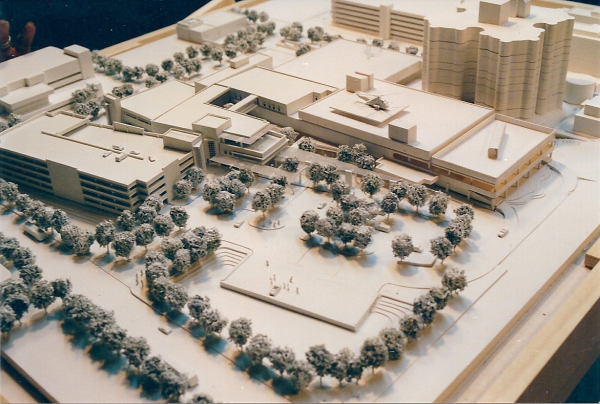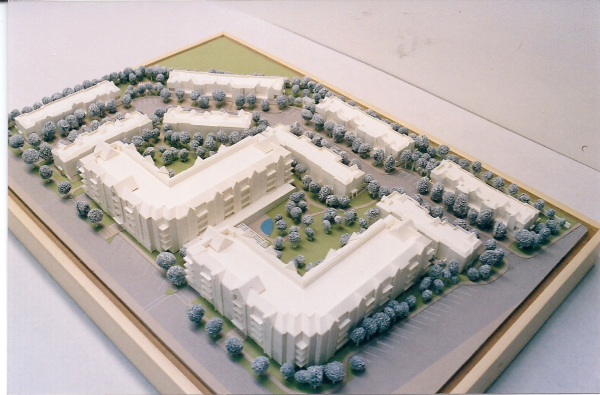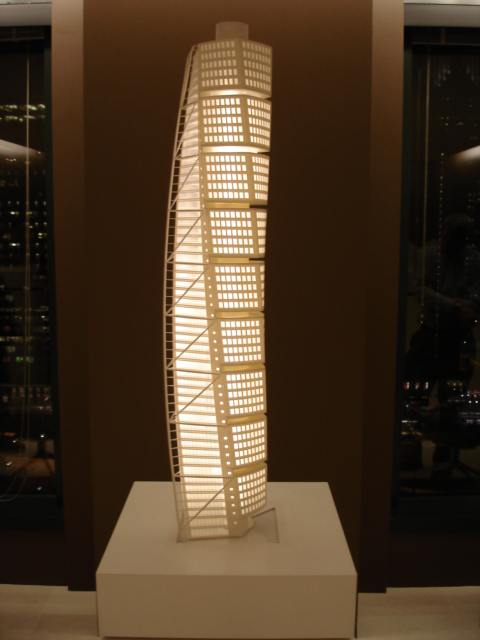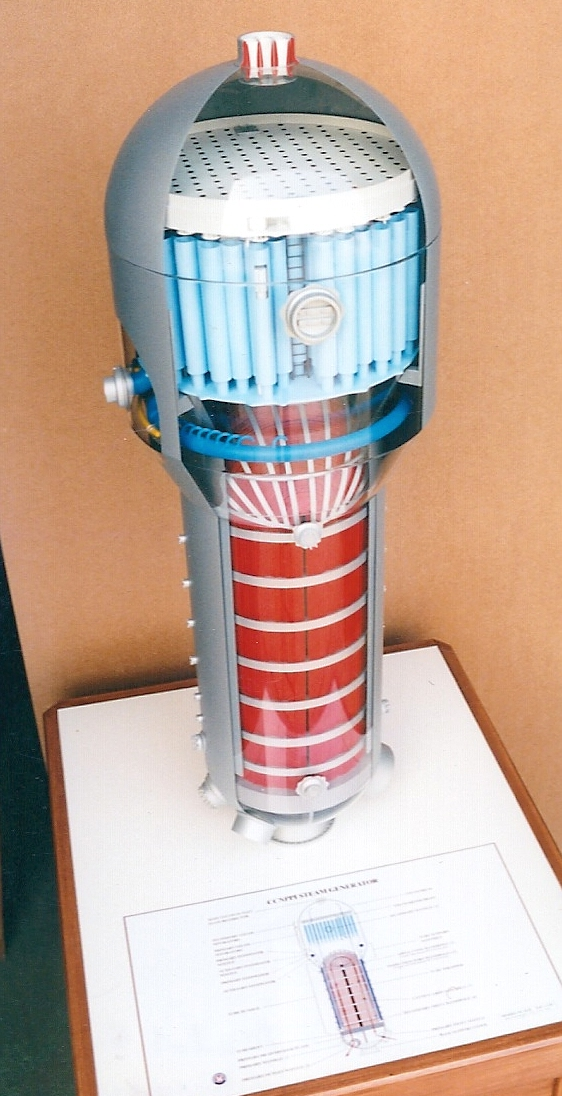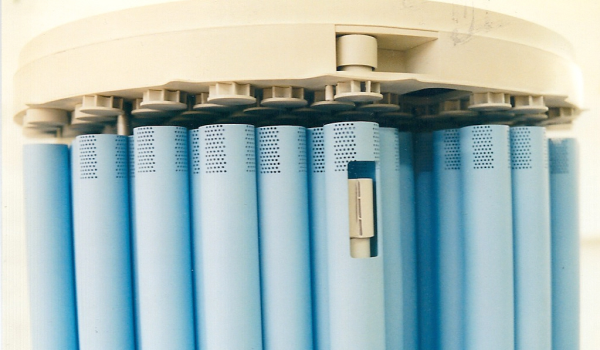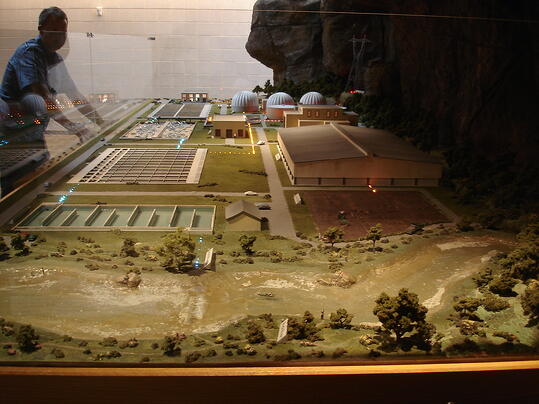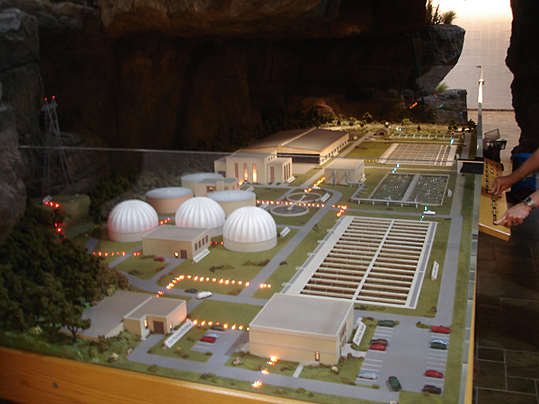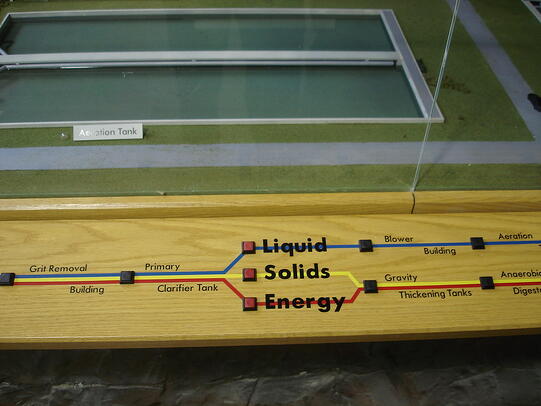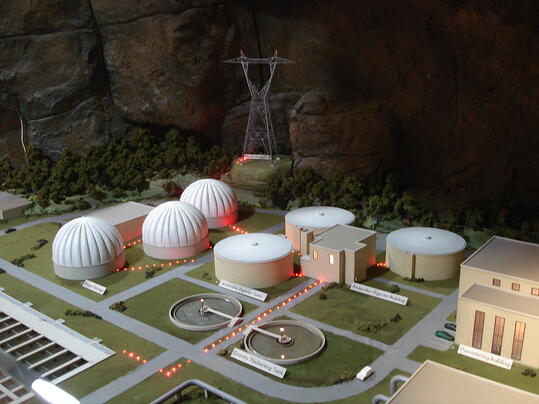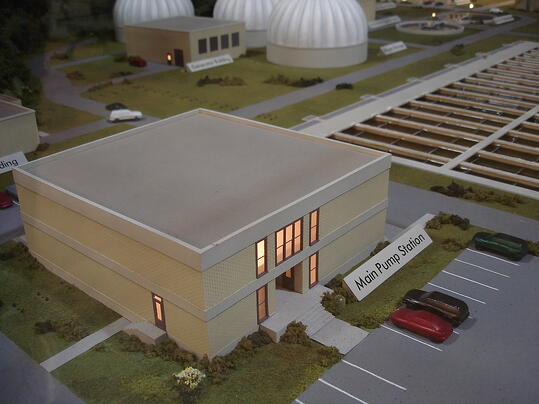To quote and build a plant layout model the model maker needs information from you. With your answers to the following eight questions you can get a quote and timetable for a plant layout model that best meets your requirements.
1) What do you need a model of?
Does the plant model reprsent one product production line, a number of product lines, a distribution center, a process like an oil refinery with multiple buildings, tanks, piping and other structures? Is it an interior model only or does it include the site outside the building?
Plant engineering studies often use a plant layout model to help analyze different equipment configurations and layouts. An existing or proposed facility may be limited in space and determined by an architectural structure. Equipment models, block or detailed, may be used to represent the different types of equipment. The model equipment depictions can be moved around in the facility until the best layout is determined. In office areas plant layout models help determine how to divide office space and show other floor space options.
Many companies use a physical plant layout model in the process of optimizing the entire plant design including electrical, water, hydraulic and HVAC before construction starts. This engineering model provides a three dimensional view of the current design which acts as a focal point for communication among all of the engineers and other personnel involved. Normally the model pays for itself by reducing or eliminating misunderstandings, omissions and reducing drawing requirements.
A plant layout model is particularly helpful where there is a lot of complex piping. The piping can be color coded with industry standard colors to make it quicker to understand. If there are errors in the piping drawings they are discovered when a physical model is made and that saves time and money when the real piping is installed.
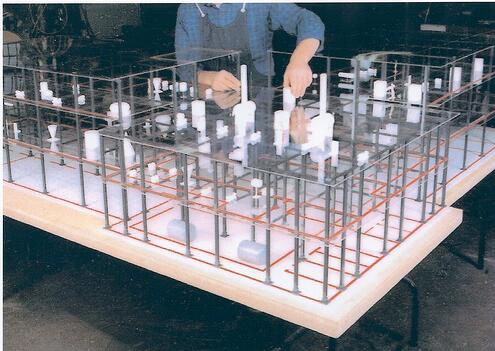
Pharmaceutical multi-story interconnected plant layout planning model
Sometimes a plant layout model of a large site is used to explain a process like water treatment to customers or the public so they can more easily visualize all of the buildings and tanks as well as their interrelationship.
2) What is the purpose of the model?
If the model maker knows the purpose of the model you may get suggestions that improve the model to better achieve the purpose. For instance arrows on the equipment or floor may help in clarifying the direction of travel in the production line.
-
Conveyor direction of travel shown with arrows
- Are you building a new production line and using the model to figure out an optimal equipment layout?
- Is the plant layout model for production training in a manufacturing plant?
- Is the model to give an overall view of a large production area to show potential customers?
- Is it a focal point for employee quality meetings?
- Is it a plant layout model for planning changes in the production line?
- Perhaps the model is to explain the best design features to your workers, managers or clients.
Let the model maker know the purpose and what is important to highlight on the model.
3) What is the scale?
You may or may not have figured out how big you want the model. We find it quite helpful if the potential client has already printed out a plan view and some elevation views of the model in the scale they think they want it. They may find some important details such as control panels, piping or handles are too small in the model scale they originally thought they wanted. We have noticed that a number of clients need to see the printed out views before they can be sure it is in the right scale for their use.
Common scales for plant layout models are 1:48, 1:100 and 1:200. A lot of model structural parts, materials, architectural parts, vehicles, people, landscape detail, etc. is available in those scales. It often helps to have a scale person(s) or vehicle(s) in the model to make it easier to understand visually the model scale.
If there are railroad tracks in the model it is much less expensive if the model is in a standard railroad hobby scale. 1:87 scale is HO gauge which is the most popular railroad gauge, 1:160 is N gauge. and 1:220 is Z gauge. For larger scales track exists. 1:48 scale is O gauge and 1:24 scale is American gauge. Tracks in a few other large gauges exist. A lot of plant layout models are 1:100 scale which is close enough to HO gauge that HO gauge railroad tracks, railroad cars, vehicles, people and cars are often used in 1:100 scale models.
4) Do you have drawings and if so in what format?
Model cost estimates should be based on requirements that are well thought out before the fabrication of the model begins. To get a model quote it is helpful to have at a minimum pdfs or alternatively printouts in the desired model scale with plan and elevation views. A common CAD file format is .dwg or .dxf. but many other common CAD formats can be used. Photographs of the plant and equipment are also quite helpful in determining the quote.
If not available at the quote phase then before model fabrications begins the model maker needs any detailed drawings that may be available. If you do not have a complete set of drawings it is helpful to provide a list of what is missing. The drawings should also be reviewed prior to giving them to the model maker to be sure that there are no earlier obsolete drawings included or obsolete file types like .CAL files. We have seen projects where the quote had to be revised by up to 40 percent more because 400 out of about 1,000 drawings were obsolete earlier versions of the same drawing, were not needed to build the model or were missing.
5) Do you need explanatory labels, diagrams or lights?
A control board with labels on the side of the model could also light up specific machines, areas or builidngs in the model. Chase lights could be added to show the flow of a production process. See our earlier blog on a plant layout model with a control board and lights at http://modelbuilders.net/blog/bid/154286/This-waste-water-treatment-plant-layout-model-shows-how-it-works .
6) What type of base do you need? Do you need a clear plastic dust cover? Do you need a shipping crate or case?
Models larger than 4' wide X 8' long are often made on multiple tables that butt up and line up with adjacent tables on one or more sides. If the model is 4' X 8' or less then often the base is about 4" high wood that frames all four sides. Removable legs or a credenza style base underneath (with or without doors) could be added under the wood framed model.
A clear plastic dust cover is not used very often on a base that is bigger than 4' wide X 8' long. Usually a clear plastic barrier would be put on the sides instead. Although clear acrylic does come in 5' X 10' sheets it tends to bow downward on the top of the dust cover in that size.
Some plant layout models could be 2' X 3' or smaller. For smaller models a ATA style shipping case could be used if desired. Larger models may need to be shipped in a wood crate, customized packaging or a dedicated van or truck. It is usually best to have the model maker, who knows best where the model might need extra protection or support, produce the shipping container.
7) What is your budget?
The price of a plant layout model depends on a variety of choices that are to a large measure determined by your budget. The scale of the model, the number of parts, the level of detail and many other factors determine the final price. You can save yourself and the model maker a lot of time by defining a price range or maximum at the start of your conversation. Then discuss which of the choices will reduce or raise the price. Block depicted equipment is less expensive than detailed equipment for example.
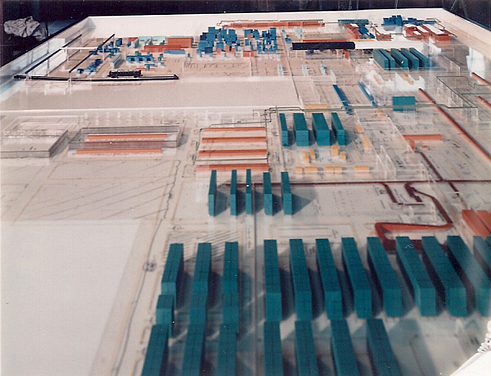
Block depicted equipment in a manufacturing plant model
There are three major steps in making a plant layout model. They are design, planning and fabrication. If you have thought through a lot of the design and planning as well as provide drawings, illustrations or pictures, etc. of what you want then the price will be lower than it would otherwise.
8) Who will the model maker be working with on clarifying the marketing and technical details?
The model maker needs to talk with the person or persons who can provide the best and quickest answers to marketing and technical questions during the planning process. That cuts costs by improving the model maker's ability to prepare an accurate quote at the outset rather than dealing with additional work orders. If you provide the essential information during the quote process the model maker does not have to add to the quote a figure to research the answers to vague or incomplete information.
The final model is often best if it is a collaborative effort between you and the model maker. Model Builders, Inc. is known for creative, economical, realistic plant layout models. Take the next step by contacting us at Model Builders, Inc., 773-586-6500 or info@modelbuilders.net .
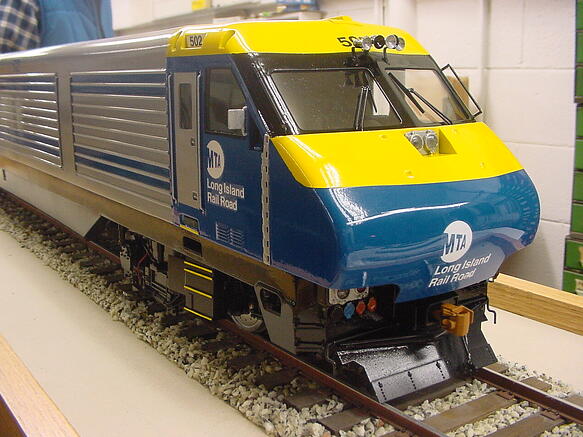
 Internal equipment rack prior to painting. Primarily brass construction
Internal equipment rack prior to painting. Primarily brass construction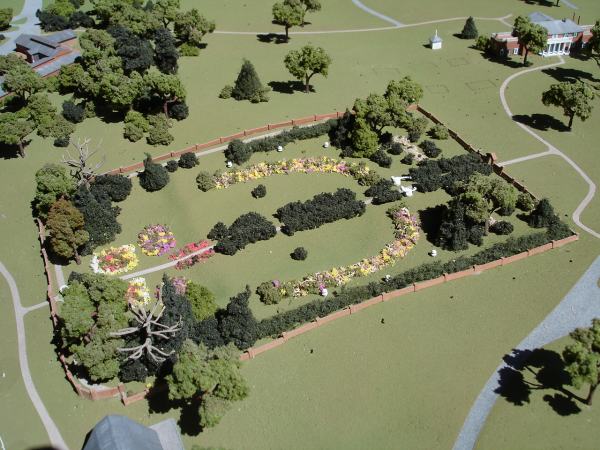


 Different model iterations of the interior interrelationships
Different model iterations of the interior interrelationships
 Two of several exterior screen walls - the perforated one at the top was chosen
Two of several exterior screen walls - the perforated one at the top was chosen Presentation model - Basswood, cardboard, and Plexiglas
Presentation model - Basswood, cardboard, and Plexiglas